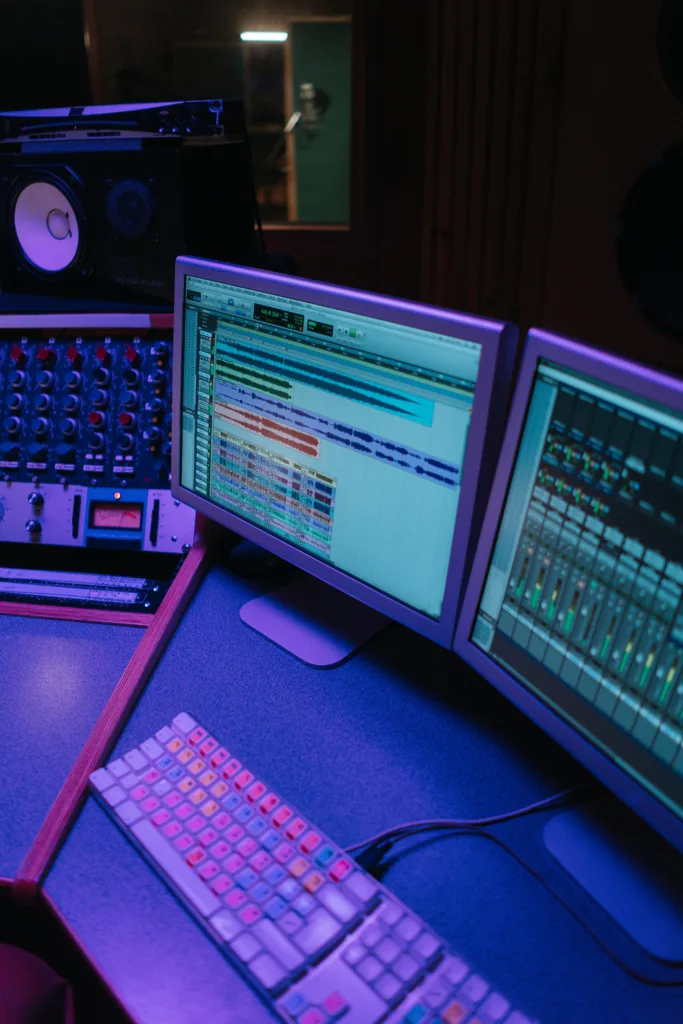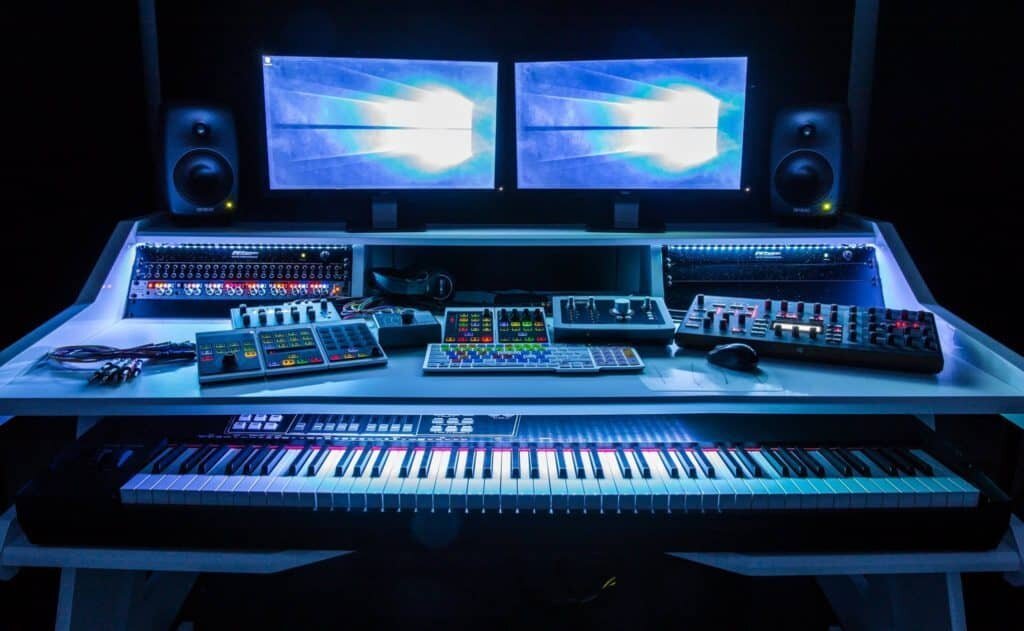Mixing and Mastering

Mixing :
"Mixing is the art of blending individual tracks together to create a cohesive and balanced audio experience. It involves adjusting levels, EQ, dynamics, and spatial effects to enhance clarity and depth. A well-executed mix can bring out the best in each element, resulting in a professional and engaging sound. Through careful manipulation, mixing transforms raw recordings into polished and impactful music."
Certainly! Here are some general mixing tips to help you improve your audio productions:
- Gain Staging: Ensure proper gain staging throughout your mix to maintain clarity and prevent distortion. Keep levels consistent and avoid clipping.
- Balance: Achieve a balanced mix by setting appropriate levels for each track. Use volume faders to adjust the relative loudness of different elements in the mix.
- Panning: Utilize panning to create a sense of space and separation between instruments. Place elements across the stereo field to avoid clutter and enhance stereo imaging.
- EQ (Equalization): Use EQ to sculpt the frequency content of individual tracks and make room for other instruments in the mix. Cut unwanted frequencies and boost desired ones to enhance clarity and definition.
- Compression: Apply compression to control dynamics and add punch or sustain to individual tracks or the entire mix. Use it subtly to avoid over-compression and maintain natural dynamics.
- Reverb and Delay: Incorporate reverb and delay effects to add depth and dimension to your mix. Experiment with different settings to create a sense of space and ambiance.
- Automation: Utilize automation to dynamically adjust volume, panning, and effects parameters over time. This helps to enhance the dynamics and expression of your mix.
- Reference Tracks: Compare your mix to professionally mixed and mastered tracks in a similar genre. This can provide valuable insights into achieving a competitive sound and help identify areas for improvement.
- Monitor in Different Environments: Listen to your mix on various playback systems (e.g., studio monitors, headphones, car stereo) to ensure it translates well across different listening environments.
- Trust Your Ears: Ultimately, trust your ears and use your intuition when making mixing decisions. Experimentation and practice are key to developing your mixing skills.
Note : Remember that mixing is both an art and a science, and there's no one-size-fits-all approach. Keep experimenting, refining your techniques, and developing your own unique sound.

Mastering :
Mastering is the final step in the audio production process and aims to enhance the overall clarity, consistency, and balance of a mix while ensuring it translates well across different playback systems. Here are some mastering tips to help you achieve professional results:
- Reference Tracks: Use professionally mastered tracks in a similar genre as references to guide your mastering decisions. Compare the tonal balance, dynamics, and overall loudness of your mix with those of the reference tracks.
- Room Acoustics: Ensure your mastering environment has accurate acoustics and monitoring. A well-treated room and high-quality studio monitors or headphones are essential for making informed mastering decisions.
- Gain Staging: Maintain proper gain staging throughout the mastering chain to prevent clipping and distortion. Pay attention to peak and RMS levels, and use gain staging plugins or tools to ensure optimal levels.
- EQ (Equalization): Use EQ to correct any tonal imbalances in the mix and enhance clarity and definition. Make subtle adjustments to the overall frequency balance, focusing on problem areas or enhancing the mix's characteristics.
- Compression and Dynamics Processing: Apply multiband compression or dynamic processing to control the dynamics of the mix and achieve a more balanced and cohesive sound. Use compression transparently to glue the mix together without over-compressing.
- Stereo Imaging: Use stereo imaging tools to adjust the width and spatial characteristics of the mix. Enhance stereo separation and imaging while ensuring mono compatibility for a more immersive listening experience.
- Limiting and Loudness Maximization: Use a limiter or maximizer to increase the overall loudness of the mix while maintaining clarity and dynamics. Pay attention to the loudness levels and ensure your master is competitive with commercial releases without sacrificing sound quality.
- Dithering and Format Conversion: Apply dithering when converting the mastered audio to lower bit depths for distribution. Choose the appropriate dither type and settings to minimize quantization distortion and maintain audio quality.
- Quality Control: Listen to the mastered audio on various playback systems and environments to ensure it translates well across different platforms. Check for any artifacts, distortion, or tonal inconsistencies and make adjustments as needed.
- Mastering Chain Order: Experiment with the order of processing plugins in your mastering chain to achieve the desired results. Start with corrective processing (EQ, dynamic processing) before moving on to creative enhancements (exciters, stereo imaging) and finalizing with limiting or maximization.
Note : Remember that mastering is a subtle art, and less is often more. Focus on enhancing the mix's strengths while addressing any weaknesses, and aim for a balanced and cohesive final product that preserves the integrity of the original mix.
